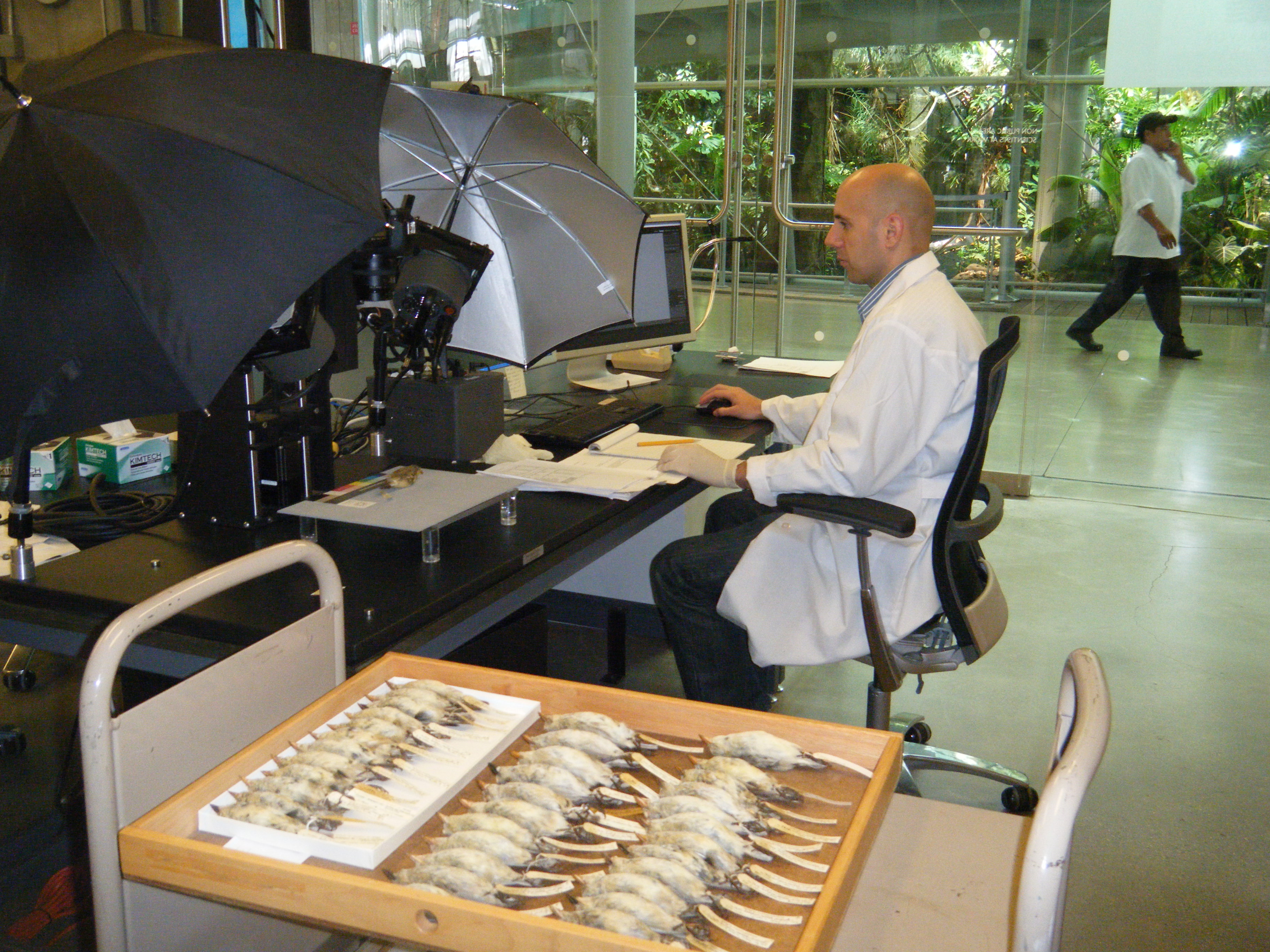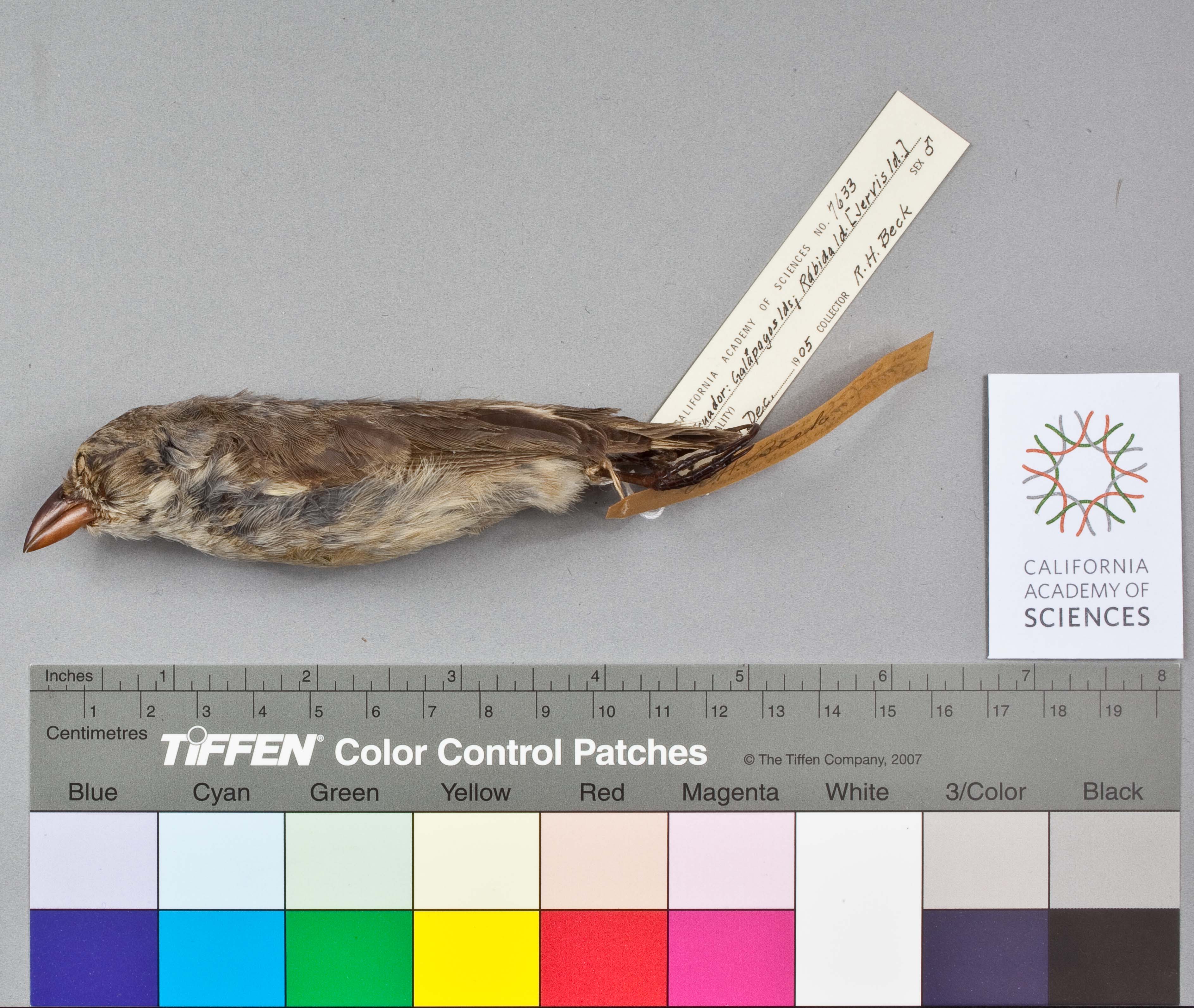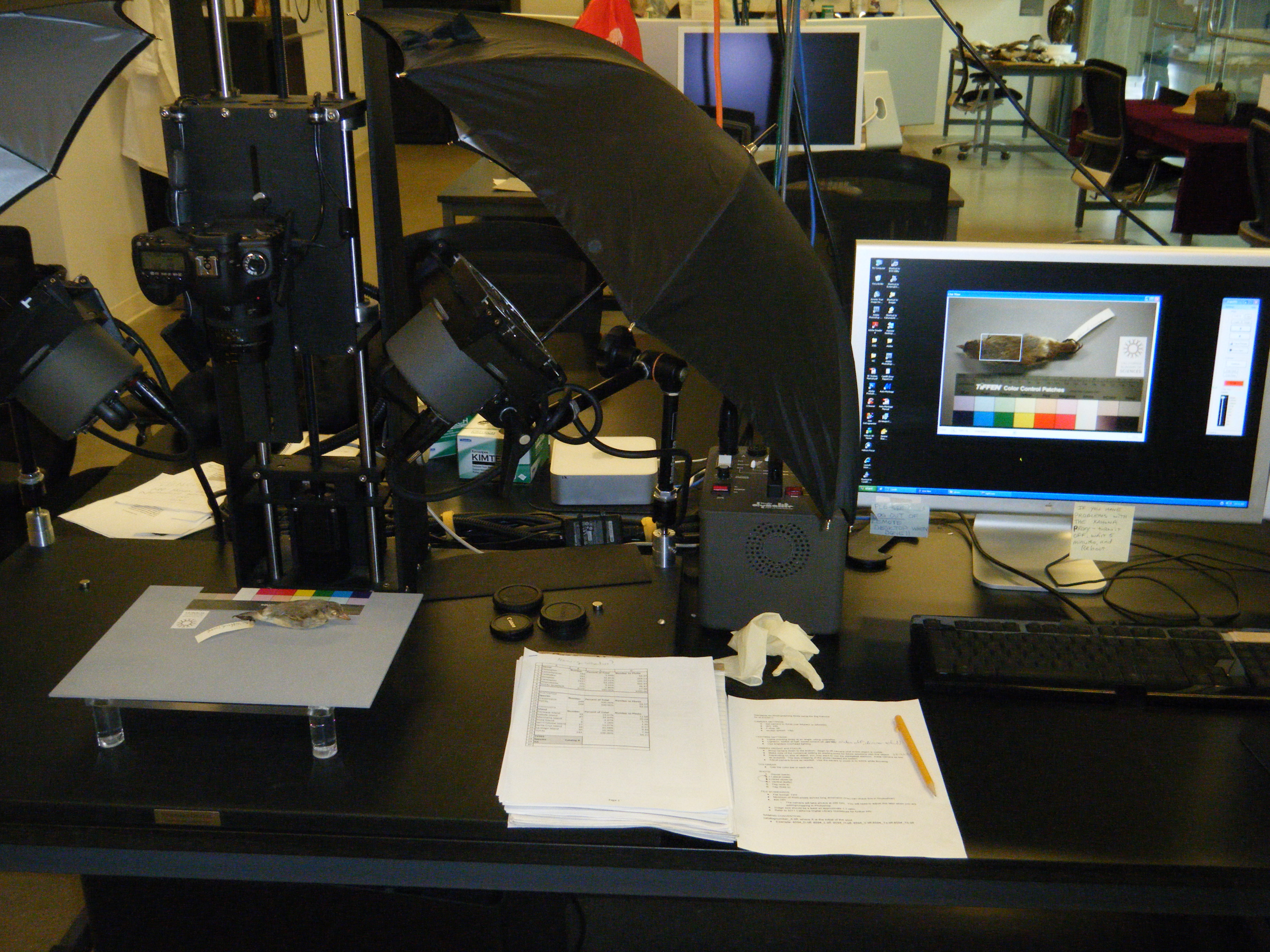Galapagos Islands 1905-1906 Digitization Project Update: Imaging Finch Specimens
I am almost at the end of my 16-week internship at the Academy Library, and I am excited to have started imaging finch specimens. This is part of the Connecting Content project, which has been made possible with grant funding from the Institute of Museum and Library Services. This project involves digitizing and providing access to expedition field notes and avian specimens from a 1905-1906 expedition to the Galapagos Islands. At the end of the project the finch specimen images will be available through the Encyclopedia of Life.
During the first few months of the project I worked on digitizing the expedition field notes while we prepared for imaging the finches. A lot of planning and experimenting had to be done before we could begin, and I learned a lot along the way.

The finch collection from this expedition consists of over 4,000 specimens; this includes numerous species collected from many of the islands in the Galapagos Archipelago. Before beginning this project, the project staff had to figure out how we would select the 1,000 specimens that will be imaged as our sample from this collection.
Through our selection process we want to provide researchers and users with a balanced and deep collection, so we are imaging a proportional sample of each species, including an equal sampling of male and female specimens, from every island where they were collected.
One of the goals of this project is to provide researchers with the ability to view these images online and conduct research remotely, so it was important that we considered image quality, camera angles, and image uniformity. After discussions with staff scientists and researchers we are taking six images of each specimen, from different points of view. This includes shots of the ventral (belly), dorsal (back), lateral (side), and head/beak of the finches, as well as the front and back sides of the collection tags. The collection tags are important as they contain information such as the genus, species, collection date, specimen number, and the island where they were collected.

The bird specimens must be handled carefully. Although they are quite rigid, some parts of them may break or come off with rough or excessive handling, particularly their feathers and legs. Each specimen is gently placed on a uniform background with a ruler and a color bar before the photograph is taken. The color bar allows us, as well as the user, to gauge color representation and accuracy.
The camera that we are using for this part of the project is a Canon E05 5D with a 50mm lens. It creates highly detailed and crisp images. One can zoom in and view incredible detail, including individual strands of feathers, and even dandruff particles. The camera is attached to a custom-built mount, and is affectionately known as “the Big Kahuna.” This equipment was provided by Academy curator of Herpetology Bob Drewes. You can read about his ongoing work teaching about and studying the incredible biodiversity of Sao Tome and Principe on his blog.

It has been fun and a great learning experience to work on this project. Although my internship is coming to an end in a couple of weeks, I am certain you will be hearing more about the progress of this exciting project from the staff and other interns over the next couple of years.
Josh Roselle